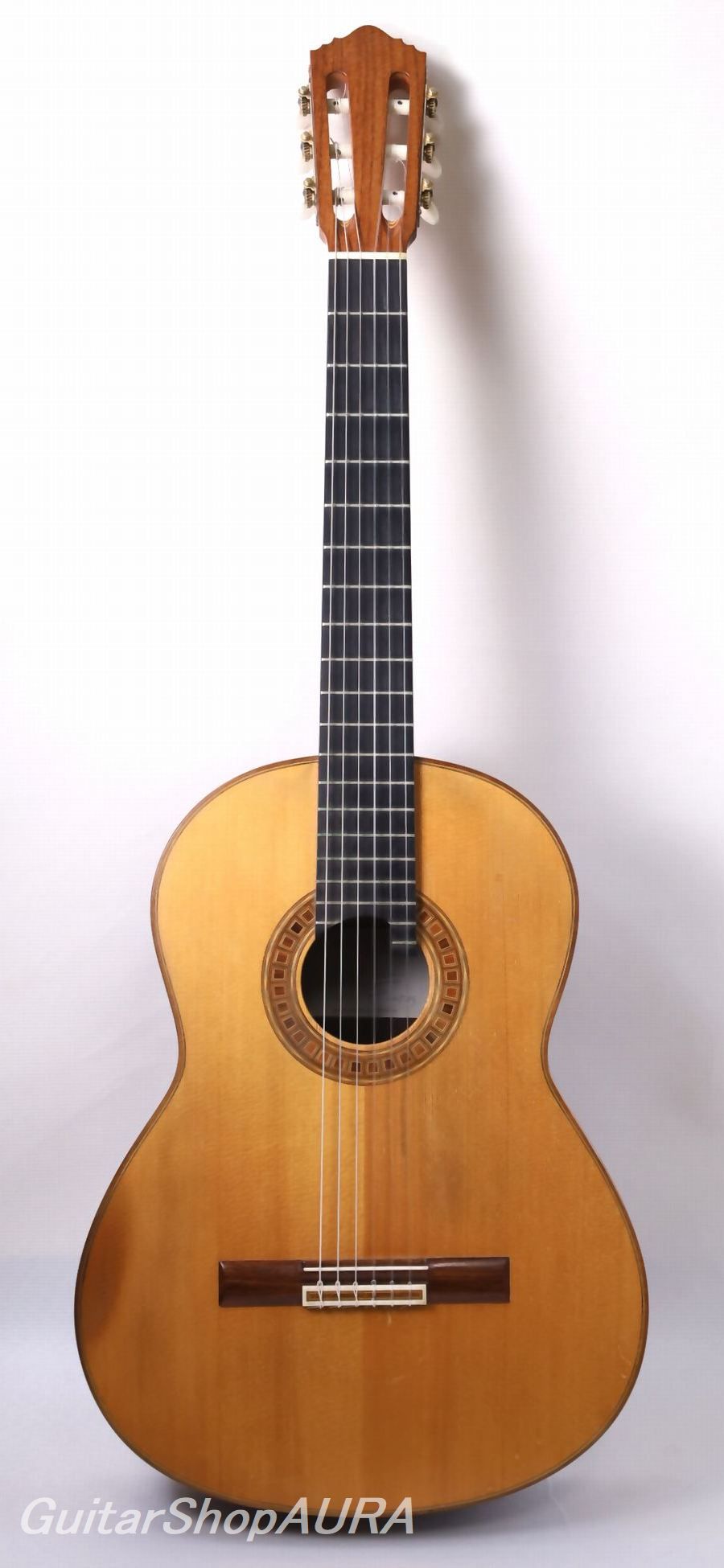
| Instrument | Santiago de Cecilia |
| Category | Imported Classical Guitars 〔Used〕 |
| Number/Model | No.110 |
| Scale length | 650mm |
| Country | Spain |
| Year | 2014Year |
| Top | Solid Spruce |
| Side&Back | Solid Indian Rosewood |
| Condition※ | 6 |
| List price | INQUIRE |
| Price (tax included) | Please Inquire |
| option | With Hardcase |
Click to enlarge the photos below
Neck: Cedro
Fingerboard: Ebony
Finish(Top): Shellac
Finish(Back & Sides): Shellac
Tuning Machines: Fustero
String Height(1st): 3.5 mm
String Height(6th): 3.9 mm
[Luthier Information]
Santiago de Cecilia is a collaborative guitar-making brand based in Barcelona, Spain, led by María Cecilia Saenz Rols and Juan Santiago Canals, both born in Argentina in 1977. Santiago first developed an interest in guitar making while studying classical guitar in his hometown. In 1996, he enrolled in the Faculty of Arts at the National University of La Plata, where he excelled academically. Alongside his university studies, he also pursued courses in Spanish guitar construction. In 2003, he earned a scholarship to study at the Conservatori Superior de Música del Liceu in Barcelona, one of Spain’s most prestigious music institutions.
While in Barcelona, Santiago connected with luthiers Raúl Yagüe and José Antonio Reyes Torres, from whom he learned not only guitar-making techniques but also insights into the European guitar market. He eventually established a workshop in the city together with Cecilia. Cecilia originally trained as a cellist, but after meeting Santiago, she developed a deep interest in luthiery. She moved to Spain with him in 2003 and, like Santiago, studied under Yagüe and Reyes Torres. This partnership led to the founding of their brand, Santiago de Cecilia, under which they continue to build guitars today.
As they describe it themselves, their guitars follow the traditional Spanish school—explicitly referencing Torres and Barbero—characterized by a charmingly old-world quality and a warm, velvety tone that feels both familiar and inviting.
[Instrument Information]
We are pleased to present a Santiago de Cecilia guitar, No.110, made in 2014 and now available used. This instrument beautifully captures the sound of the old-school Spanish tradition the makers admire, but without pretension—offering a naturally expressive and approachable tone suited to contemporary sensibilities. With a slightly smaller body, a classically styled rosette, and meticulous craftsmanship, the guitar delivers a comfortable and cohesive resonance that is both refined and inviting.
The internal bracing is faithful to authentic Spanish design. Above the waist, two harmonic bars are positioned above and below the soundhole (neck side and bridge side), with a thin reinforcing plate between the neck foot and upper bar. On either side of the soundhole, a bar follows the curvature of the ribs, positioned between the two harmonic bars. The lower bout features a symmetrical 5-fan bracing system, with two closing bars arranged in a shallow V-shape toward the bottom. A full-width reinforcement plate is applied beneath the bridge area. The body’s resonance is tuned just above G♯.
Rather than delivering the bold brightness or intensity often associated with Spanish guitars, this instrument offers a gentler, more subdued character. It has a soft, floating echo and a nearly monochromatic tonal texture. Still, it possesses sufficient dynamic range and expressive power when called upon. This tonal balance—modern in its subtlety yet rooted in tradition—is what gives the guitar its unique voice. Its naturally aged aesthetic and warm sonority make it easy for the player to shape a piece into a cohesive and expressive musical statement.
Finished with traditional French polish (shellac), this guitar shows significant playwear, consistent with about a decade of regular use. It has visible playing marks, dings, abrasions, and some discoloration across the body. However, there are no cracks, modifications, or significant repairs. The neck has a slight forward relief but remains within acceptable limits. The frets and fingerboard show moderate wear, especially in the first five positions, but playability is unaffected. The neck also has nail marks throughout, with notable finish wear on the treble side. It has a standard D-shaped profile with a high-position 20th fret on the treble side.
The action at the 12th fret measures 3.5mm on the 1st string and 3.9mm on the 6th string, with approximately 1.5mm of saddle height remaining. The tuning machines are made by the esteemed Spanish brand Fustero and function properly in their current state.